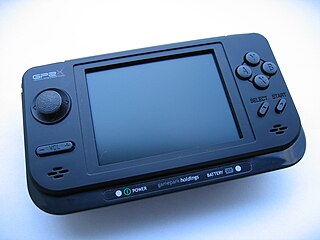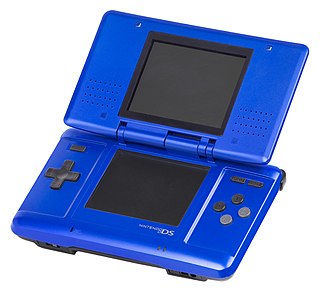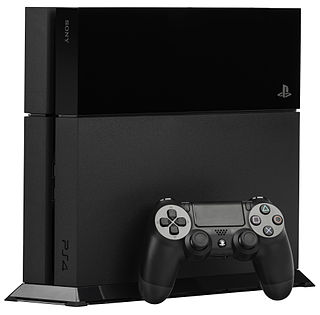 W
WThe 3DO Interactive Multiplayer, commonly referred to as 3DO, is a home video game console developed by The 3DO Company. Conceived by entrepreneur and Electronic Arts founder Trip Hawkins, the 3DO was not a console manufactured by the company itself, but a series of specifications, originally designed by Dave Needle and R. J. Mical of New Technologies Group, that could be licensed by third parties. Panasonic produced the first models in 1993, and further renditions of the hardware were released in 1994 by GoldStar, and in 1995 by Sanyo.
 W
WThe Apple Pippin is a defunct open multimedia technology platform, designed by Apple Computer, and marketed as PiPP!N. According to Apple, Pippin was directed at the home market as "an integral part of the consumer audiovisual, stereo, and television environment."
 W
WThe Compact Disc-Interactive is a digital optical disc data storage format that was mostly developed and marketed by Dutch company Philips. It was created as an extension of CDDA and CD-ROM and specified in the Green Book, co-developed by Philips and Sony, to combine audio, text and graphics. The two companies initially expected to impact the education/training, point of sale, and home entertainment industries, but CD-i eventually became best known for its video games.
 W
WThe Game Boy is an 8-bit handheld game console developed and manufactured by Nintendo. The first handheld in the Game Boy family, it was first released in Japan on April 21, 1989. The console was released in North America later the same year, then in Europe in late 1990. It was designed by the same team that developed the Game & Watch series of handheld electronic games and several Nintendo Entertainment System games: Satoru Okada, Gunpei Yokoi, and Nintendo Research & Development 1.
 W
WThe Game Boy Advance (GBA) is a 32-bit handheld game console developed, manufactured and marketed by Nintendo as the successor to the Game Boy Color. It was released in Japan on March 21, 2001, in North America on June 11, 2001, in the PAL region on June 22, 2001, and in mainland China as iQue Game Boy Advance on June 8, 2004. The GBA is part of the sixth generation of video game consoles. The original model does not have an illuminated screen; Nintendo addressed that with the release of a redesigned model with a frontlit screen, the Game Boy Advance SP, in 2003. A newer revision of the redesign was released in 2005, with a backlit screen. Around the same time, the final redesign, the Game Boy Micro, was released in September 2005.
 W
WThe Game Boy Advance SP, released in Japan on February 14, 2003, is a sixth-generation handheld game console developed, released, and marketed by Nintendo that served as an upgraded version of the original Game Boy Advance. The "SP" in the name stands for "Special". It is the penultimate console in the Game Boy Advance family before the Game Boy Micro, released in September 2005. The Game Boy Advance line was followed by the Nintendo DS family, starting with the release of the original Nintendo DS in November 2004.
 W
WThe Game Boy Color is a handheld game console, manufactured by Nintendo, which was released in Japan on October 21, 1998 and to international markets that November. It is the successor to the Game Boy and is part of the Game Boy family.
 W
WThe Game Boy Micro is a handheld game console developed and manufactured by Nintendo. It was first released in Japan on September 13, 2005 as a smaller, lighter redesign of the Game Boy Advance. The system is the last console in the Game Boy line, alongside the AGS-101 model of the Game Boy Advance SP. Unlike its predecessors, the Game Boy Micro lacks backward compatibility for original Game Boy and Game Boy Color games.
 W
WThe GP2X is a Linux-based handheld video game console and portable media player developed by South Korean company GamePark Holdings. It was released on November 10, 2005, in South Korea only.
 W
WThe Neo Geo , stylised as NEO•GEO and also written as NEOGEO, is a cartridge-based arcade system board and fourth-generation home video game console released on April 26, 1990, by Japanese game company SNK Corporation. It was the first system in SNK's Neo Geo family. The Neo Geo was marketed as 24-bit; its CPU is technically a 16/32-bit 68000-based system with an 8-bit Z80 coprocessor, while its GPU chipset has a 24-bit graphics data bus.
 W
WThe Neo Geo CD is the second home video game console of SNK Corporation's Neo Geo family, released on September 9, 1994, four years after its cartridge-based equivalent. This is the same platform, converted to the cheaper CD format retailing at $49 to $79 per title, compared to the $300 cartridges. The system was originally priced at US$399, or £399 in the UK. The system can also play Audio CDs. All three versions of the system have no region-lock. The Neo Geo CD was launched bundled with a control pad instead of a joystick like the AES version. However, the original AES joystick can be used with all three Neo Geo CD models.
 W
WThe Neo Geo Pocket is a monochrome handheld game console released by SNK. It was the company's first handheld system and is part of the Neo Geo family. It debuted in Japan in late 1998 but never saw an American release, being exclusive to Japan, Asia and Europe.
 W
WThe Neo Geo Pocket Color is a 16-bit color handheld video game console manufactured by SNK. It is a successor to SNK's monochrome Neo Geo Pocket handheld which debuted in 1998 in Japan, with the Color being fully backward compatible. The Neo Geo Pocket Color was released on March 16, 1999 in Japan, August 6, 1999 in North America, and on October 1, 1999 in Europe, entering markets all dominated by Nintendo, competing with Nintendo's Game Boy Color.
 W
WThe Nintendo DS is a handheld game console produced by Nintendo, released globally across 2004 and 2005. The DS, an initialism for "Developers' System" or "Dual Screen", introduced distinctive new features to handheld games: two LCD screens working in tandem, a built-in microphone and support for wireless connectivity. Both screens are encompassed within a clamshell design similar to the Game Boy Advance SP. The Nintendo DS also features the ability for multiple DS consoles to directly interact with each other over Wi-Fi within a short range without the need to connect to an existing wireless network. Alternatively, they could interact online using the now-defunct Nintendo Wi-Fi Connection service. Its main competitor was Sony's PlayStation Portable during the seventh generation of video game consoles.
 W
WThe Nintendo DS Lite is a dual-screen handheld game console developed and manufactured by Nintendo. It is a slimmer, brighter, and more lightweight redesign of the original Nintendo DS. It was announced on January 26, 2006, more than a month before its initial release in Japan on March 2, 2006 due to overwhelming demand for the original model. It has been released in Australia, North America, Europe, New Zealand, Singapore, and defined regions in South America, the Middle East, and East Asia. As of March 31, 2014, the DS Lite had shipped 93.86 million units worldwide.
 W
WThe Nintendo Switch is a video game console developed by Nintendo and released worldwide in most regions on March 3, 2017. The console itself is a tablet that can either be docked for use as a home console or used as a portable device, making it a hybrid console. Its wireless Joy-Con controllers, with standard buttons and directional analog sticks for user input, motion sensing, and tactile feedback, can attach to both sides of the console to support handheld-style play. They can also connect to a grip accessory to provide a traditional home console gamepad form, or be used individually in the hand like the Wii Remote and Nunchuk, supporting local multiplayer modes. The Nintendo Switch's software supports online gaming through Internet connectivity, as well as local wireless ad hoc connectivity with other consoles. Nintendo Switch games and software are available on both physical flash-based ROM cartridges and digital distribution via Nintendo eShop; the system has no region lockout. A handheld-focused revision of the system, called the Nintendo Switch Lite, was released on September 20, 2019. A revised higher-end model, featuring an OLED screen, was released on October 8, 2021.
 W
WThe Nintendo Switch Lite is a handheld game console by Nintendo. It was released on September 20, 2019, as a lower-cost, handheld-only version of the Nintendo Switch. It plays most of the same games as the original Nintendo Switch and comes in several colors.
 W
WThe PlayStation 3 (PS3) is a home video game console developed by Sony Computer Entertainment. It is the successor to PlayStation 2, and is part of the PlayStation brand of consoles. It was first released on November 11, 2006, in Japan, November 17, 2006, in North America, and March 23, 2007, in Europe and Australia. The PlayStation 3 competed primarily against Microsoft's Xbox 360 and Nintendo's Wii as part of the seventh generation of video game consoles.
 W
WThe PlayStation 4 (PS4) is a home video game console developed by Sony Computer Entertainment. Announced as the successor to the PlayStation 3 in February 2013, it was launched on November 15, 2013, in North America, November 29, 2013 in Europe, South America and Australia, and on February 22, 2014 in Japan. A console of the eighth generation, it competes with Microsoft's Xbox One, Nintendo's Wii U and Switch.
 W
WThe PlayStation 4 (PS4) is a home video game console developed by Sony Computer Entertainment. Announced as the successor to the PlayStation 3 in February 2013, it was launched on November 15, 2013, in North America, November 29, 2013 in Europe, South America and Australia, and on February 22, 2014 in Japan. A console of the eighth generation, it competes with Microsoft's Xbox One, Nintendo's Wii U and Switch.
 W
WThe PlayStation 4 (PS4) is a home video game console developed by Sony Computer Entertainment. Announced as the successor to the PlayStation 3 in February 2013, it was launched on November 15, 2013, in North America, November 29, 2013 in Europe, South America and Australia, and on February 22, 2014 in Japan. A console of the eighth generation, it competes with Microsoft's Xbox One, Nintendo's Wii U and Switch.
 W
WThe PlayStation 5 (PS5) is a home video game console developed by Sony Interactive Entertainment. Announced in 2019 as the successor to the PlayStation 4, the PS5 was released on November 12, 2020, in Australia, Japan, New Zealand, North America, and South Korea, with worldwide release following a week later. The PS5 is part of the ninth generation of video game consoles, along with Microsoft's Xbox Series X and Series S consoles, which were released in the same month.
 W
WThe PlayStation Portable (PSP) is a handheld game console developed and marketed by Sony Computer Entertainment. It was first released in Japan on December 12, 2004, in North America on March 24, 2005, and in PAL regions on September 1, 2005, and is the first handheld installment in the PlayStation line of consoles. As a seventh generation console it competed with the Nintendo DS.
 W
WThe PlayStation TV, known in Japan and other parts of Asia as the PlayStation Vita TV or PS Vita TV, is a microconsole, and a non-handheld variant of the PlayStation Vita handheld game console. It was released in Japan on November 14, 2013, North America on October 14, 2014, and Europe and Australia on November 14, 2014.
 W
WThe PlayStation Vita is a handheld video game console developed and marketed by Sony Interactive Entertainment. It was first released in Japan on December 17, 2011, and in North America, Europe, and other international territories beginning on February 22, 2012. The console is the successor to the PlayStation Portable, and a part of the PlayStation brand of gaming devices; as part of the eighth generation of video game consoles, it primarily competed with the Nintendo 3DS.
 W
WThe Speak & Spell line is a series of electronic hand-held child computers by Texas Instruments that consisted of a TMC0280 linear predictive coding speech synthesizer, a keyboard, and a receptor slot to receive one of a collection of ROM game library modules. The first Speak & Spell was introduced at the summer Consumer Electronics Show in June 1978, making it one of the earliest handheld electronic devices with a visual display to use interchangeable game cartridges. The company Basic Fun brought the classic Speak & Spell in 2019 although with some minor changes.
 W
WThe Virtual Boy is a 32-bit tabletop portable video game console developed and manufactured by Nintendo. Released in 1995, it was marketed as the first console capable of displaying stereoscopic "3D" graphics. The player uses the console like a head-mounted display, placing the head against the eyepiece to see a red monochrome display. The games use a parallax effect to create the illusion of depth. Sales failed to meet targets, and Nintendo ceased distribution and game development in 1996, having released only 22 games for the system.
 W
WThe Visteon Dockable Entertainment System is a portable DVD player created by Visteon in 2006 for the US market at an MSRP of $1299 USD. The player is notable for containing officially licensed Game Boy Advance hardware, as Visteon partnered with Nintendo to announce the product at CES 2006. Initially due out in April, the product was then delayed to May before finally launching in July of that year. To celebrate the product's launch Visteon held a photography and writing contest.
 W
WThe Xbox One is a line of home video game consoles developed by Microsoft. Announced in May 2013, it is the successor to Xbox 360 and the third base console in the Xbox series of video game consoles. It was first released in North America, parts of Europe, Australia, and South America in November 2013 and in Japan, China, and other European countries in September 2014. It is the first Xbox game console to be released in China, specifically in the Shanghai Free-Trade Zone. Microsoft marketed the device as an "all-in-one entertainment system", hence the name "Xbox One". An eighth-generation console, it mainly competed against Sony's PlayStation 4 and Nintendo's Wii U and later the Switch.
 W
WThe Xbox Series X and the Xbox Series S are home video game consoles developed by Microsoft. They were both released on November 10, 2020, as the fourth generation of the Xbox console family, succeeding the Xbox One family. Along with Sony's PlayStation 5, also released in November 2020, the Xbox Series X and Series S are part of the ninth generation of video game consoles.